“The last ever RAAF ‘Classic’ Hornet Operational Conversion Course”
Aviation Spotters Online had the privilege of invitation to attend the return of the Royal Australian Air Force’s, Number 2 Operational Conversion Unit back to RAAF Base Williamtown in Newcastle, Thursday December 5th 2019. This momentous occasion was to witness the units returning ten F/A-18A/B Hornets, perform a flyover the base in the classic tiger bird formation for gathered friends and family, after the units final ever Operational Conversion Course. Since the first course in 1985 , this was the final graduating class of Hornet pilots which was the result of six months of intense training, with the culmination of the conversion course dropping live ordnance conducted in Townsville under Exercise High Sierra.
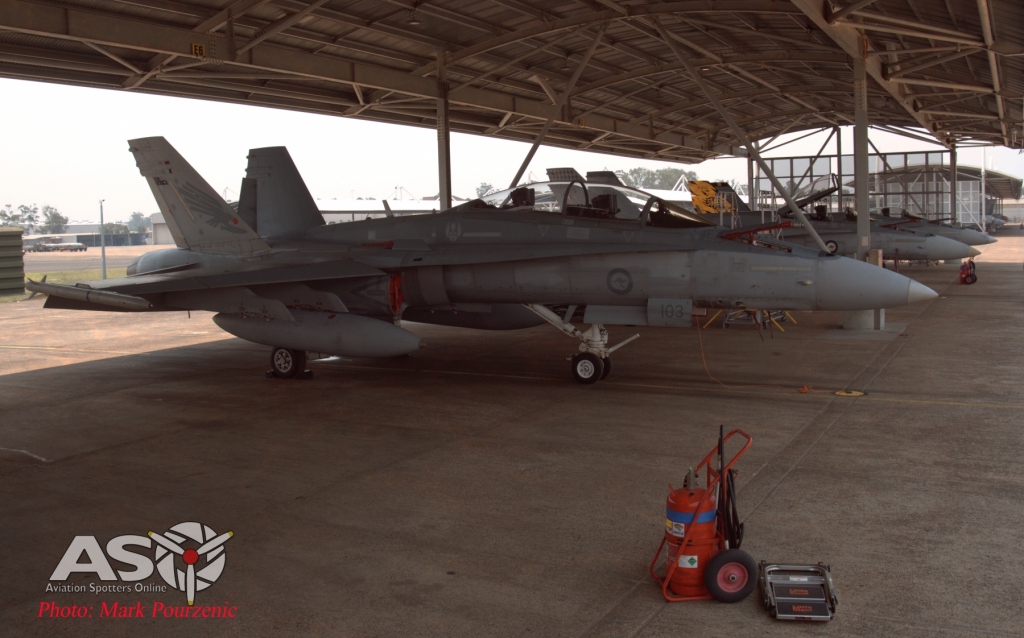
The first Australian assembled McDonnell Douglas F/A-18B Hornet, A21-103, which first flew from the then Government Aircraft Factory (GAF), situated at Avalon in Victoria during May 1985, is seen here at RAAF Base Williamtown, December 5 2019.
No.2 Operational Conversion Unit –
No. 2 OCU in the year 2019 finds itself in the final stages of operating the McDonnell Douglas F/A-18A/B Hornet as it has been since its arrival back in 1985, and as of mid December has seen the unit cease Hornet operations. As 2OCU is primarily a fighter training unit of the Royal Australian Air Force, which conducts refresher courses for pilots returning to type, as well as training pilots to operate the Hornet, it also trains future instructors on the type. With the current 2OCU conversion onto the RAAF’s newest fighter to enter service, the Lockheed Martin F-35A Lightning II Joint Strike Fighter, the training syllabus has moved from its current format to that of simulation/instruction, coupled with integration within the USAF’s structure of training which is conducted at Luke AFB in Arizona.
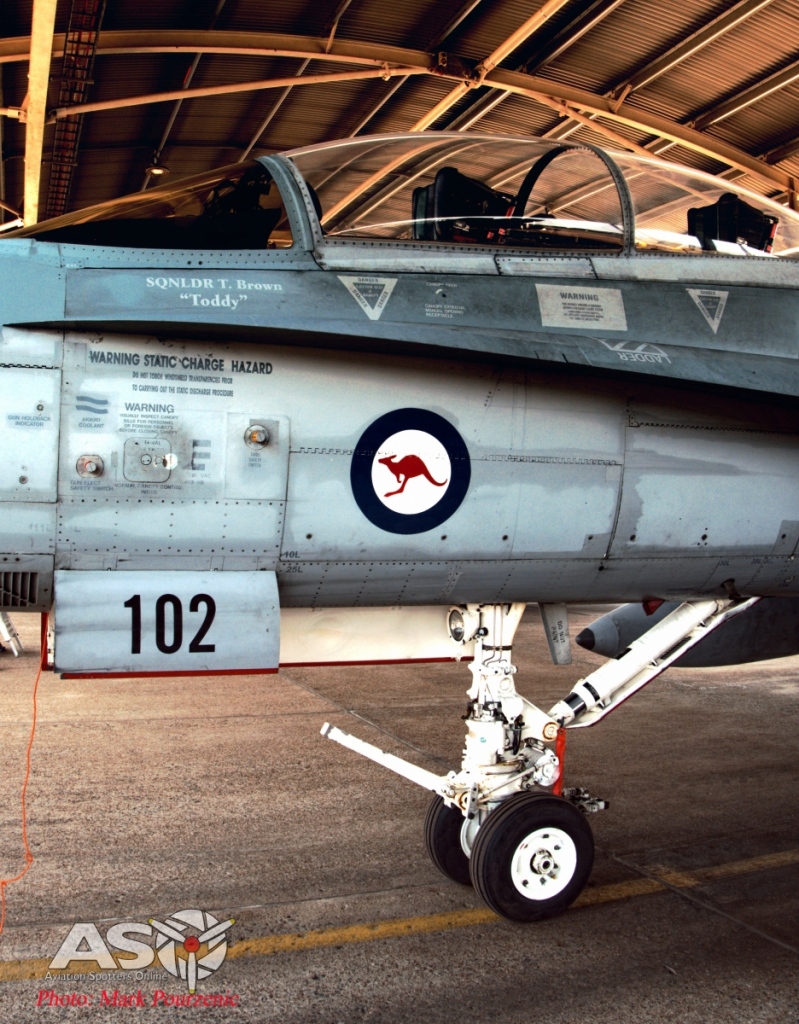
F/A-18B Hornet A21-102
Background and History –
The unit was first stood up at Port Pirie in South Australia during April of 1942, and was established as No. 2 (Fighter) Operational Training Unit ( No.2OTU), before relocating to RAAF Mildura, Victoria during May of the same year. It’s role was to change as Australia was thrust into World War II, and provided training on many varied types of aircraft such as the Spitfire, P-40 Kittyhawk and CAC Boomerang, to name but a few. 1947 witnessed its disbandment before being reinstated in March 1952 at RAAF Base Williamtown, due to need and demand to train pilots for service in the Korean War. September 1958 saw it renamed as No.2 (Fighter) Operational Conversion Unit, and has since that time trained pilots with the CAC Sabre, Dassault Mirage III, Macchi MB326 and now in its final year of 2019, the McDonnell Douglas F/A-18 Hornet.
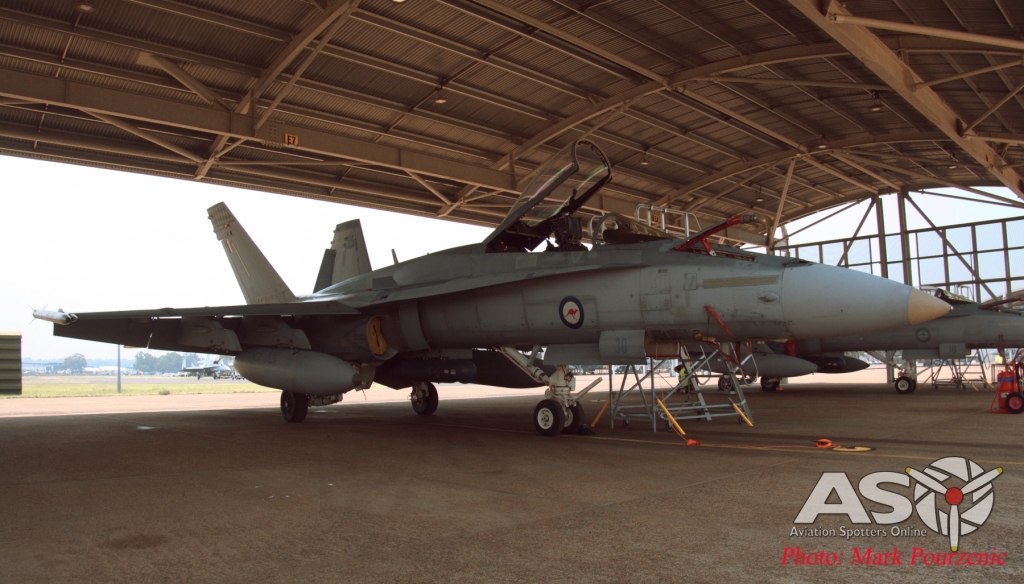
McDonnell Douglas F/A-18A Hornet A21-30
The Role of 2 OCU-
No. 2 OCU which falls under 81 Wing, part of Air Combat Group, is primarily responsible for conducting operational conversion courses on the RAAF’s soon to be retired McDonnell Douglas F/A-18 Hornet multi-role Fighter, which entered service in 1985, and 2019 sees its final year under the control of 2OCU before transition to the F-35A Joint Strike Fighter.
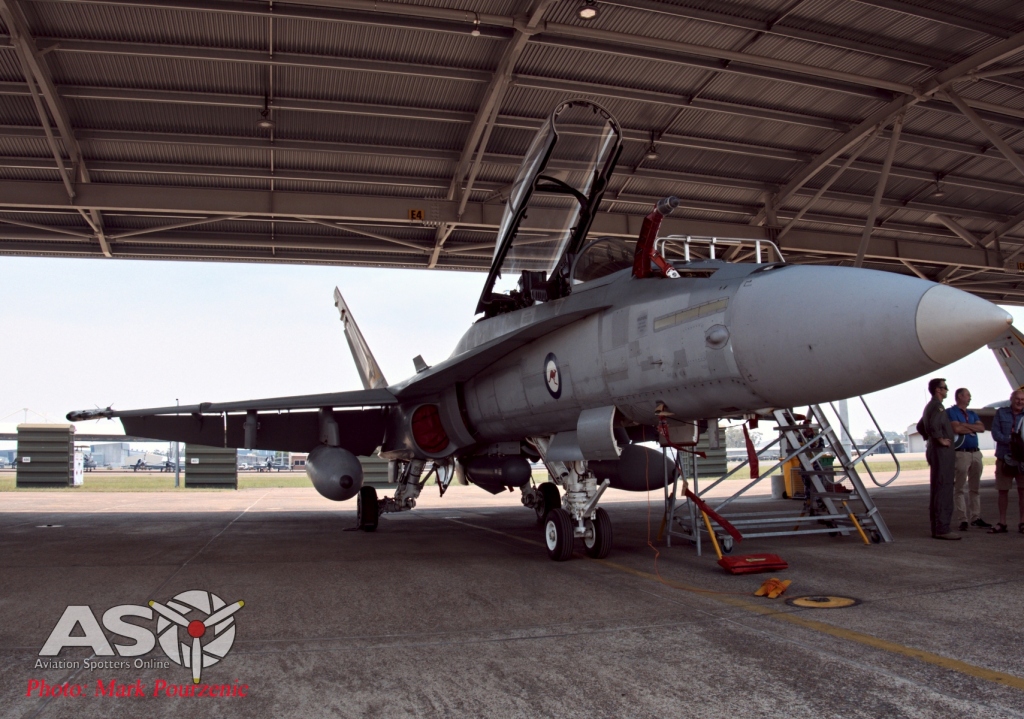
McDonnell Douglas F/A-18B Hornet, A21-108
The training of students that have completed fast jet conversion with 79 Squadron in Pearce, and lead in fighter instruction through 76 Squadron, are then selected to be converted onto the Hornet, after which time they’ll progress on through to the operational Squadrons, or onto other types such as the Boeing F/A-18F Super Hornet and EA-18G Growler. 2OCU also plays host to experienced RAAF pilots either converting from another type, or a refresher before re-joining frontline units. The instructors at No.2OCU are some of the most experienced RAAF Hornet drivers, and have a major role in the development of new tactics in co-ordination with other fighter combat instructors from the front line squadrons operating the F/A-18 Hornet.

End of an era
The A/B model Hornets of 2OCU are easily identifiable by their yellow and black tail fin flash, with the base of the flash featuring a tigers head in yellow, that’s outlined in black, with a red mouth, white fangs with white eyes.

One of the last ever 2OCU pilots to graduate onto the RAAF’s ‘Classic’ Hornet, Flying Officer Jez, seen here under the watchful eyes and microphones of local media, December 5 2019.
Conversion Course-
On average, Hornet conversion courses run for six months, during which time students must gain their instrument rating, before being taught basic fighter manoeuvres, air to air gunnery, air combat, and air to ground tactics. With the culmination of their training complete, students are prepared for their final course syllabus with Exercise High Sierra, which is run from RAAF Base Townsville, and has been in operation since 1986. This exercise lasts several weeks and involves day/night flying, along with the use of live weaponry in realistic, high pressure precision strike scenarios.

Head on with the Hornet
Along with its mainstay of conversion training, 2OCU is also in the business of conducting refresher courses for pilots returning to type, aswell as fighter combat instructor courses (FCI), which run for up to anywhere in the timescale of four to five months, and can be in the time frame of every two years or so. To qualify for the FCI course, students are chosen from the most experienced F/A-18 pilots, and are trained in the complex art of training others to instruct, including dealing with complex scenarios related to operational flying at an elite level. On completion of the course, graduates are kept on with 2OCU as qualified Hornet instructors for a two year period, after which time they are posted off to the operational front line Hornet squadrons.

McDonnell Douglas F/A-18A Hornet, A21- 16 wearing commemorative 2OCU tail art.
Exercise High Sierra 2019 –

The unmistakable tail flash of the RAAF’s Number 2 Operational Conversion Unit as seen on F/A-18B Hornet, A21-109.
Exercise High Sierra represents the last three weeks of 2OCU’s intense six month conversion onto the McDonnell Douglas F/A-18 Hornet as operated by the Royal Australian Air Force’s last two frontline operational squadrons, No’s 75 & 77.
Exercise High Sierra utilises RAAF assets such as the Boeing E-7A Wedgetail, Beech King Air 350 and Airbus KC-30A Multi Role Tanker that operate in and around the restricted airspace of Townsville, and the Townsville Field Training Area (TFTA).
ExHS19 gives participants the chance to experience the highly complex air combat training opportunities put on by Air Combat Group, and to test and practice their deployment capabilities.
Other key points associated with Ex High Sierra allow Air Force to maintain its key capabilities such as airborne command, precision strike and air to air refuelling skill sets.
Along with students completing their conversion onto the ‘Classic’ Hornet, Exercise High Sierra also sees the final phase of the E-7A Wedgetail operational conversion and upgrade courses being run, with Air Battle Managers, Electronic Support Measures Operators and Pilots all completing as E-7A qualified at the conclusion of ExHS19.
2 Squadron Boeing E-7A Wedgetail on static display at the 2013 Australian International Airshow.
Commanding Officer of No. 2 Operational Conversion Unit, Wing Commander Scott Woodland remarked Exercise High Sierra is vital training for the next generation of fighter pilots that will join the ranks of Air Force.
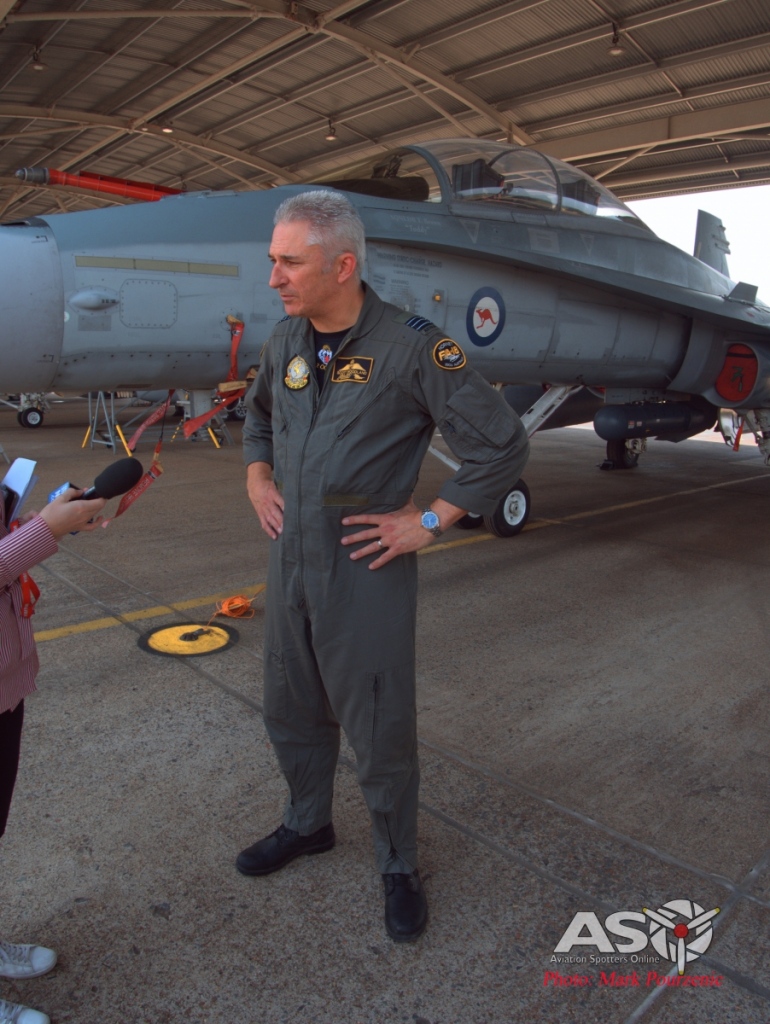
Commanding Officer of No.2 operational Conversion Unit, Wing Commander S. ‘Woody’ Woodland.
“The pilots need to achieve an extremely high level of skills to fly a complex aircraft and then make decisions to use weapons in fractions of a second.”
No.2 Operational Conversion Unit are always happy to return to Townsville, as the training provided for the pilots and challenges are exceptional, not to mention the support of the local community.
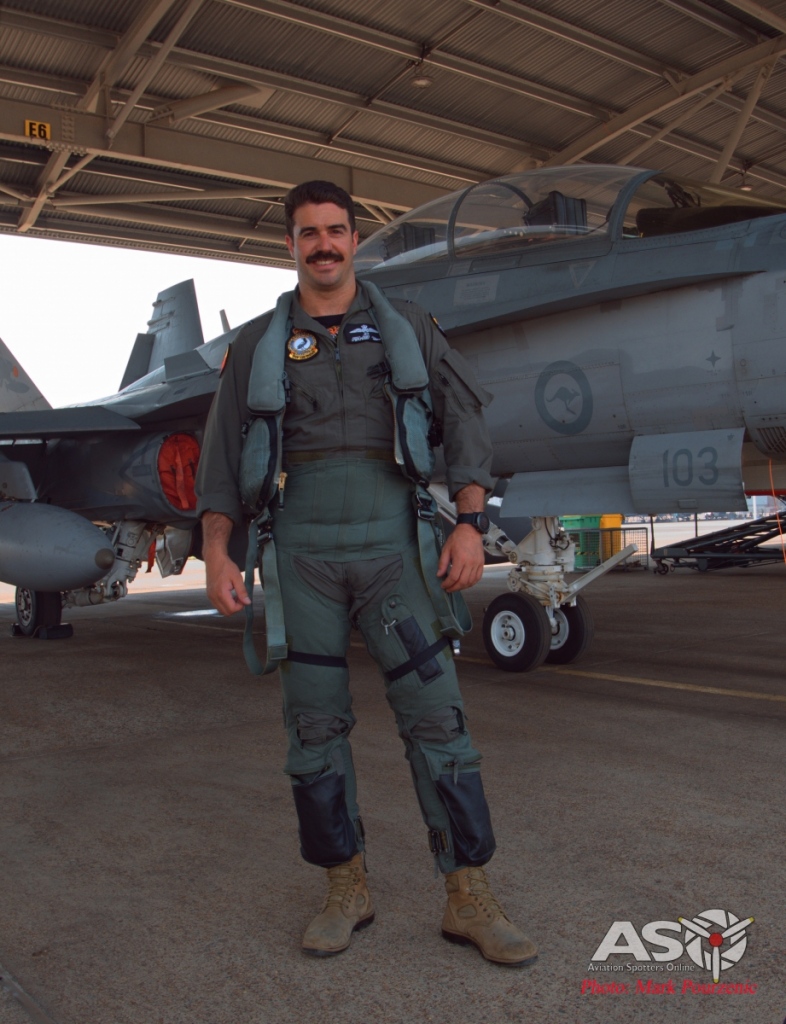
The last of the breed. Flying officer Jez has the distinction of being a graduate on the last ever OPCON onto the RAAF’s ‘Classic’ Hornet.
Although the ‘Classic’ Hornet will no longer fly with 2OCU, they’ll still continue to fly until their planned withdrawal date of December 2021, so still some time left to enjoy the sights and sounds of the F/A-18 ‘Classic’ Hornet.
Aviation Spotters Online would like to gratefully thank the team at 28 Squadron, RAAF Base Williamtown, 2OCU pilots and all who helped with access during this historic occasion. Personal thanks also to the RAAFPAO at Air Combat Group for their continued support and help.
Thank you
Mark Pourzenic

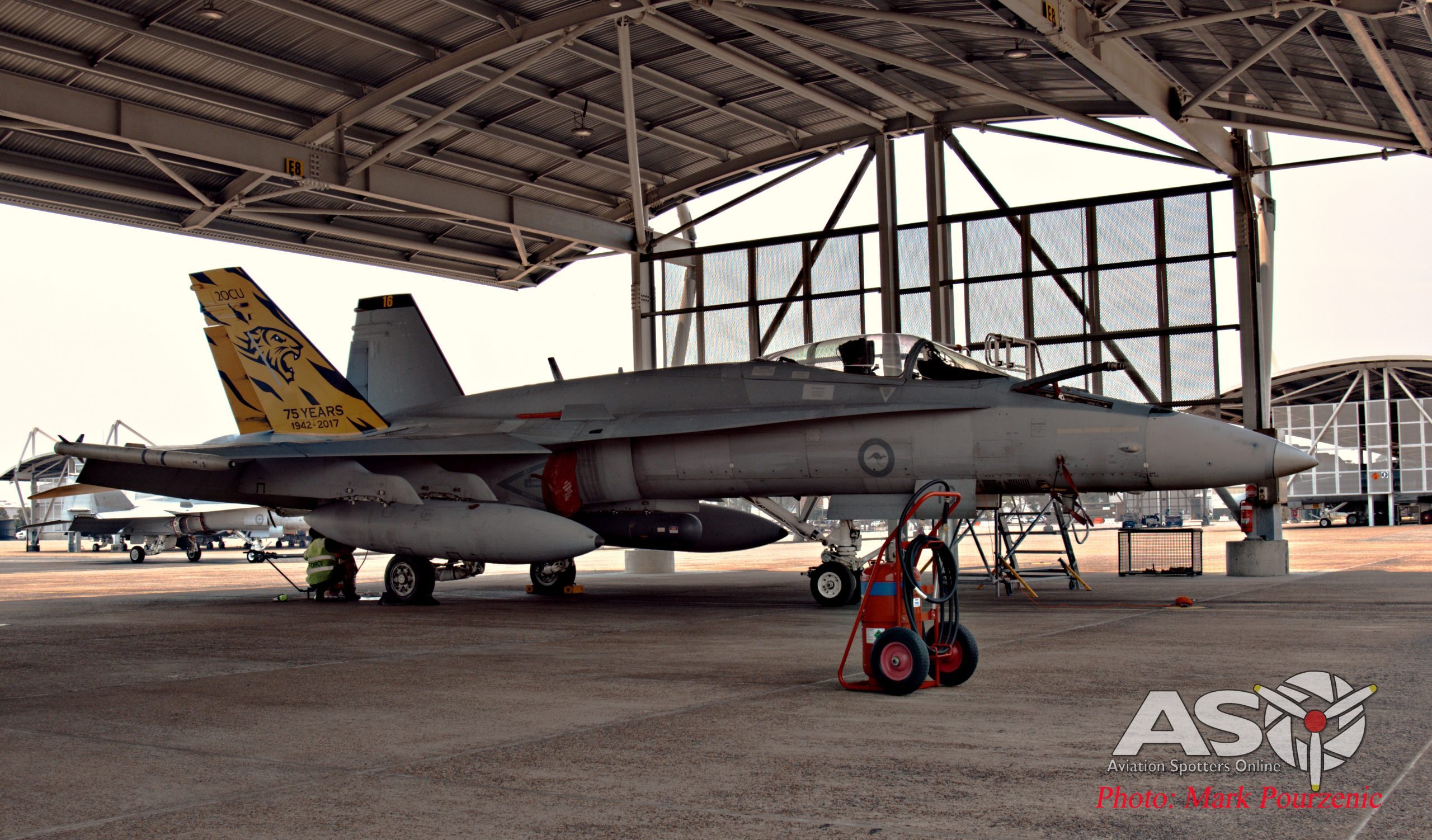

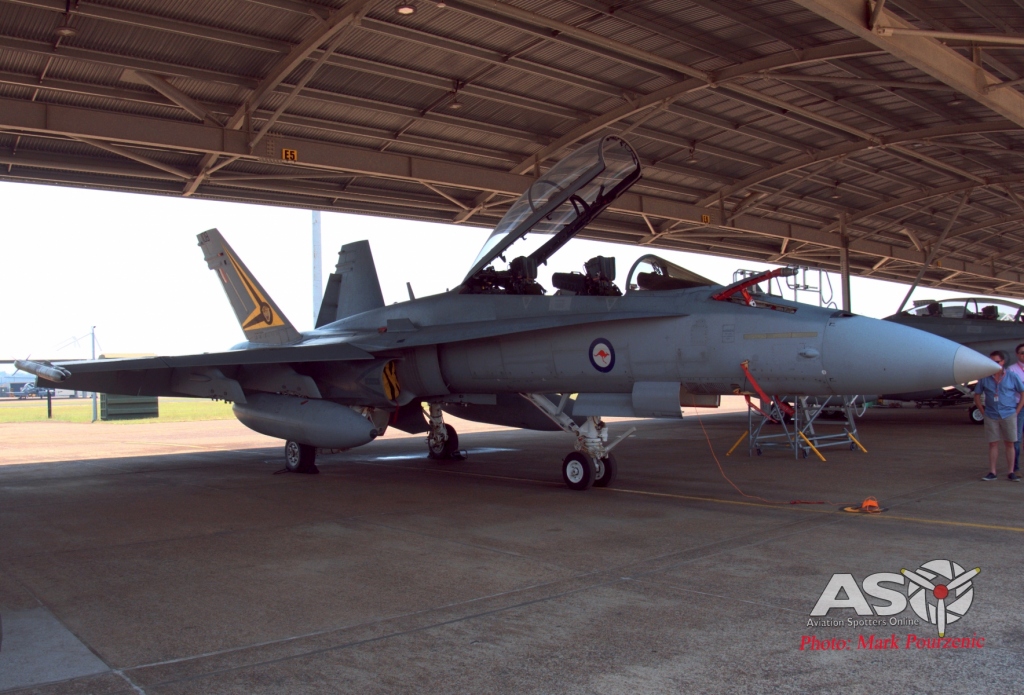












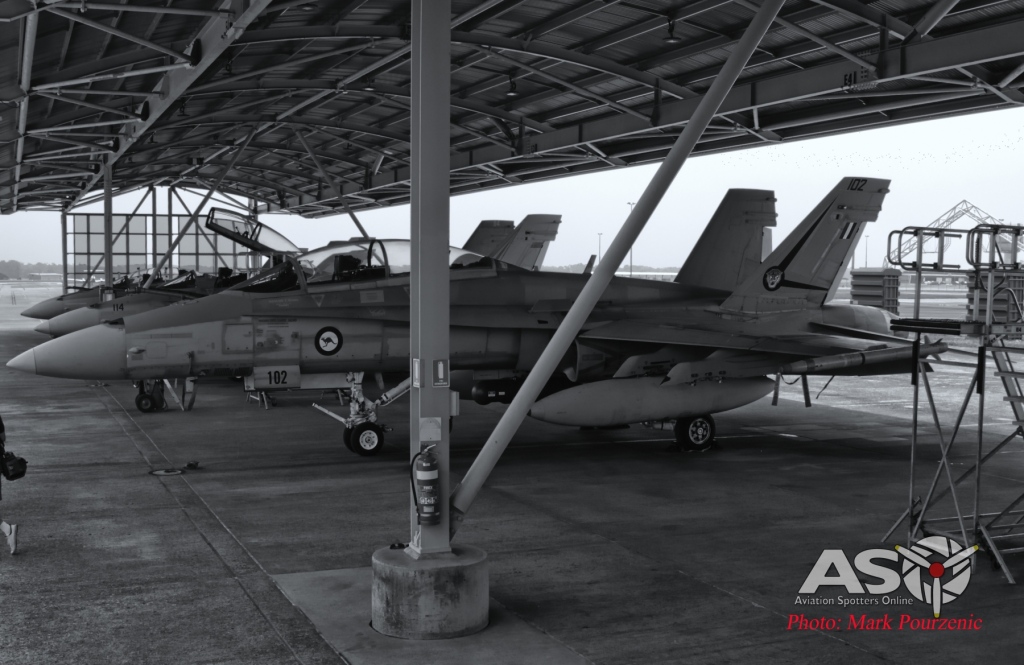



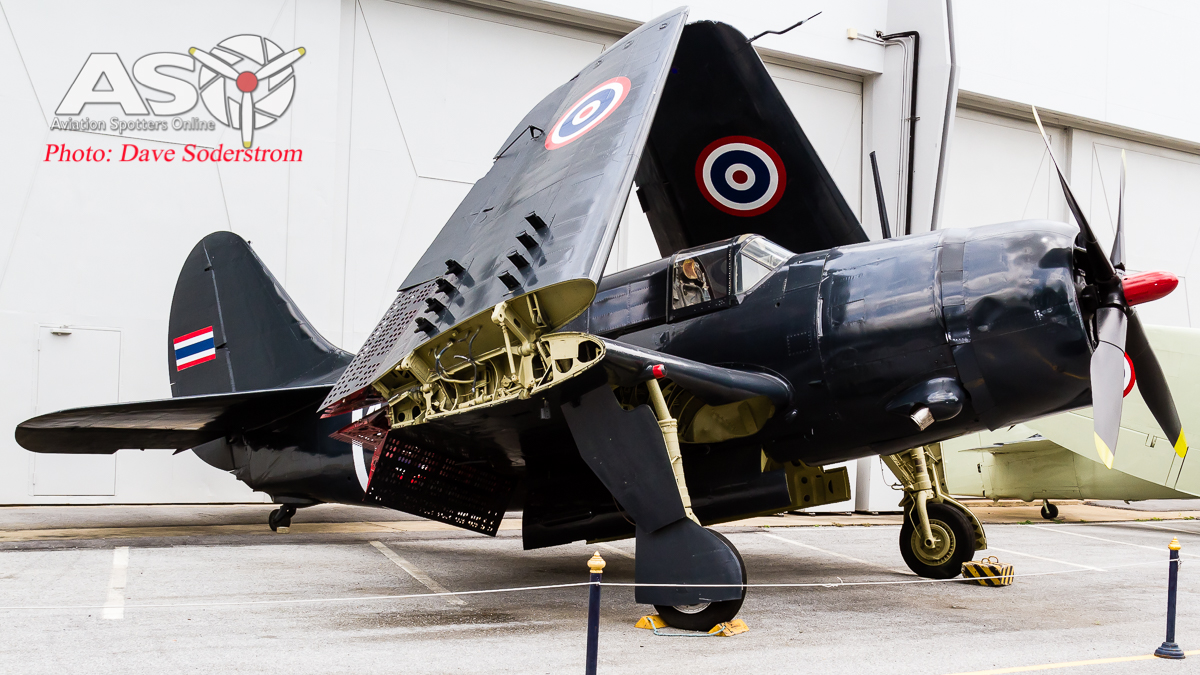






Great photography & commentary Mark. I to was there this day with my wife as we watched the boys return from their 3 week stint in Townsville, for the fly-over & the hot pass overhead.
My son was a part of this last group of pilots doing the conversion course & was later interviewed by yourself & NBN Channel 9 Newcastle.
We were of course very proud to see Jezza finally become one of the last to become a Hornet pilot.
My videos pale into insignificance when compared to your great productions which have been a pleasure to view.
Cheers & all the best … Geoffrey Robinson
Hello Mr.Robinson,
Thank you kindly for your thoughts about my article, it means the world to me to hear, and I’m only too happy to have been able to have had the opportunity and privilege of being able to capture those special moments that day.
Cheers
Mark Pourzenic